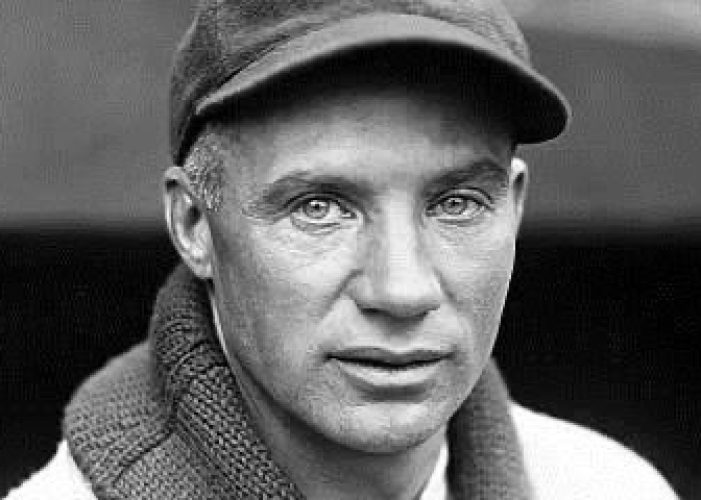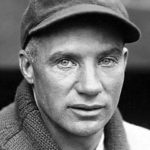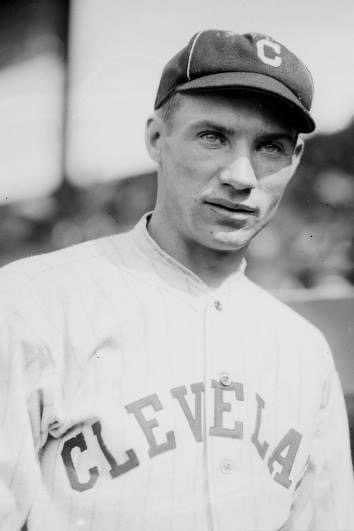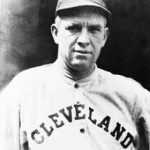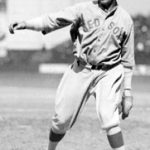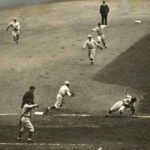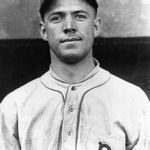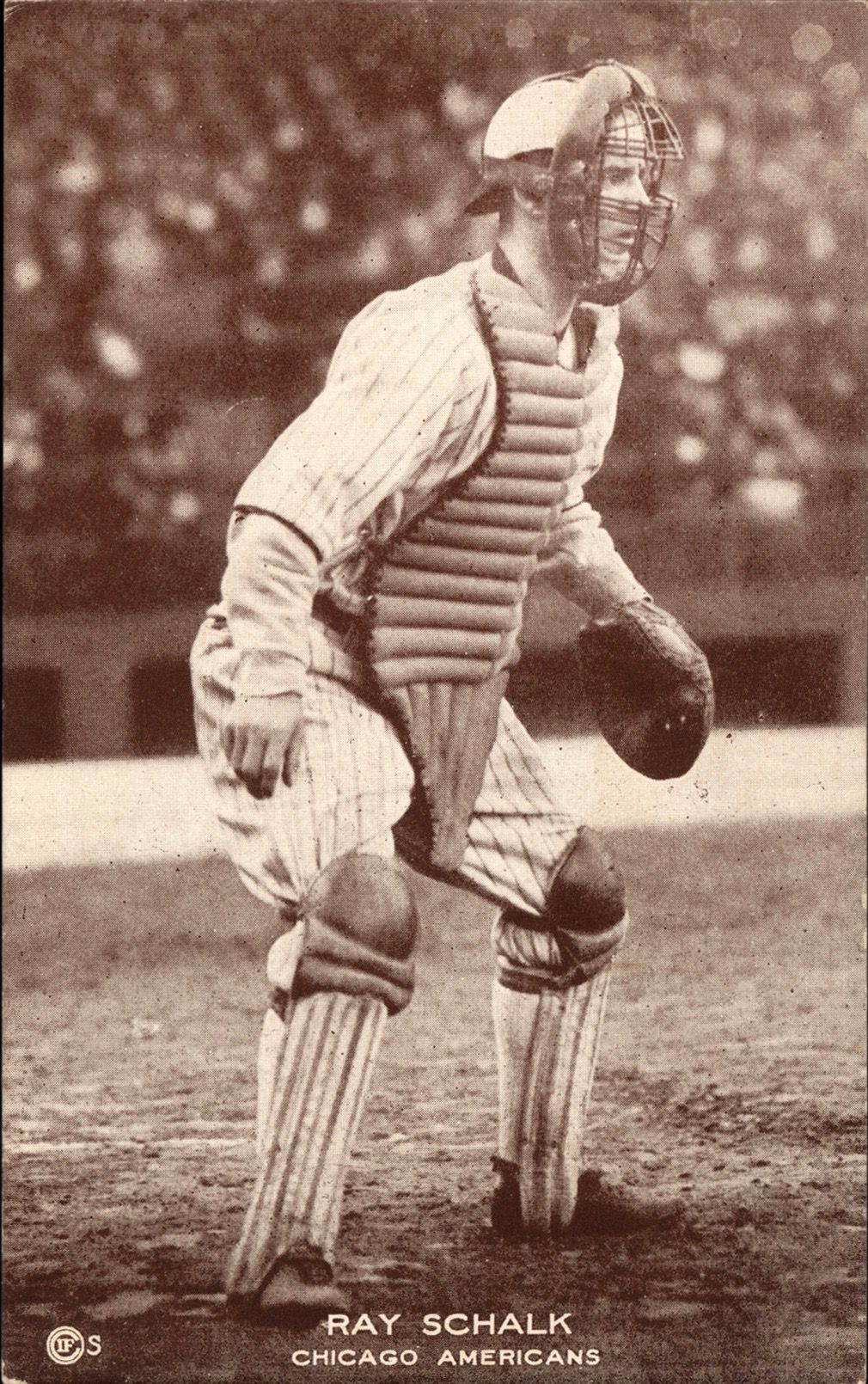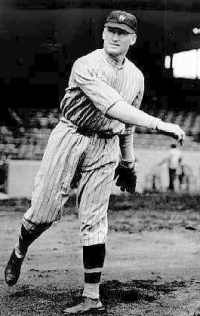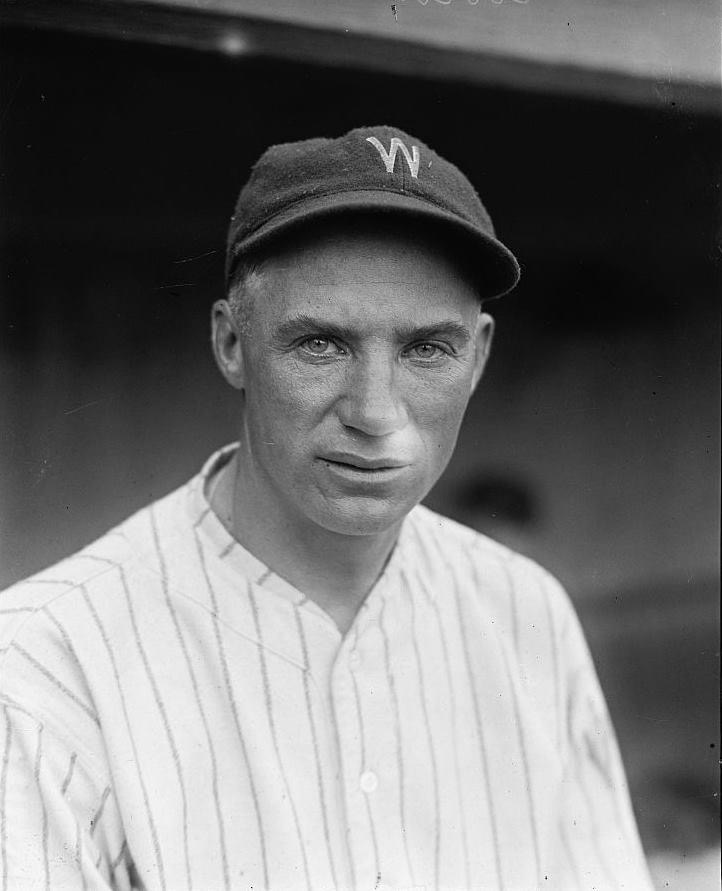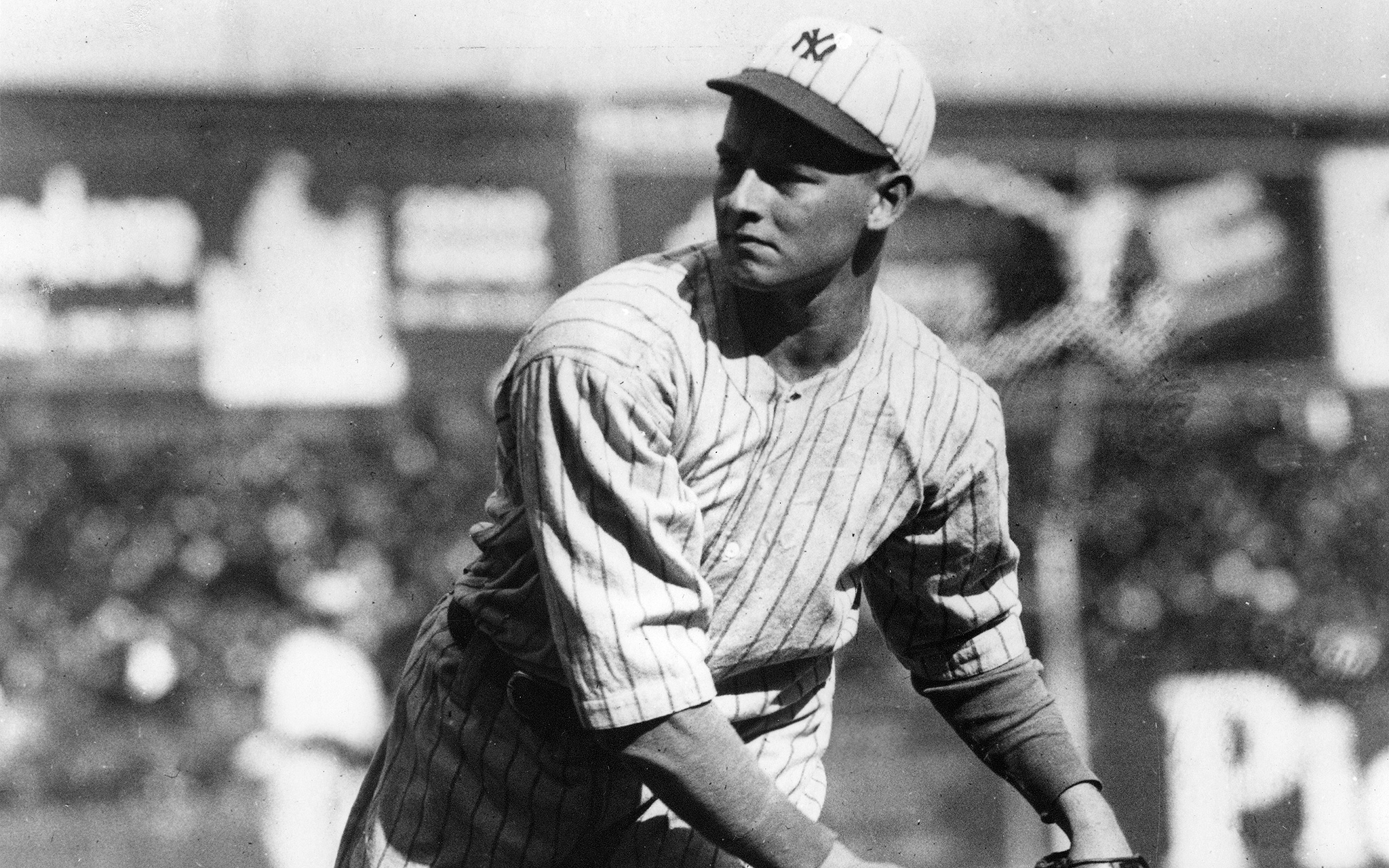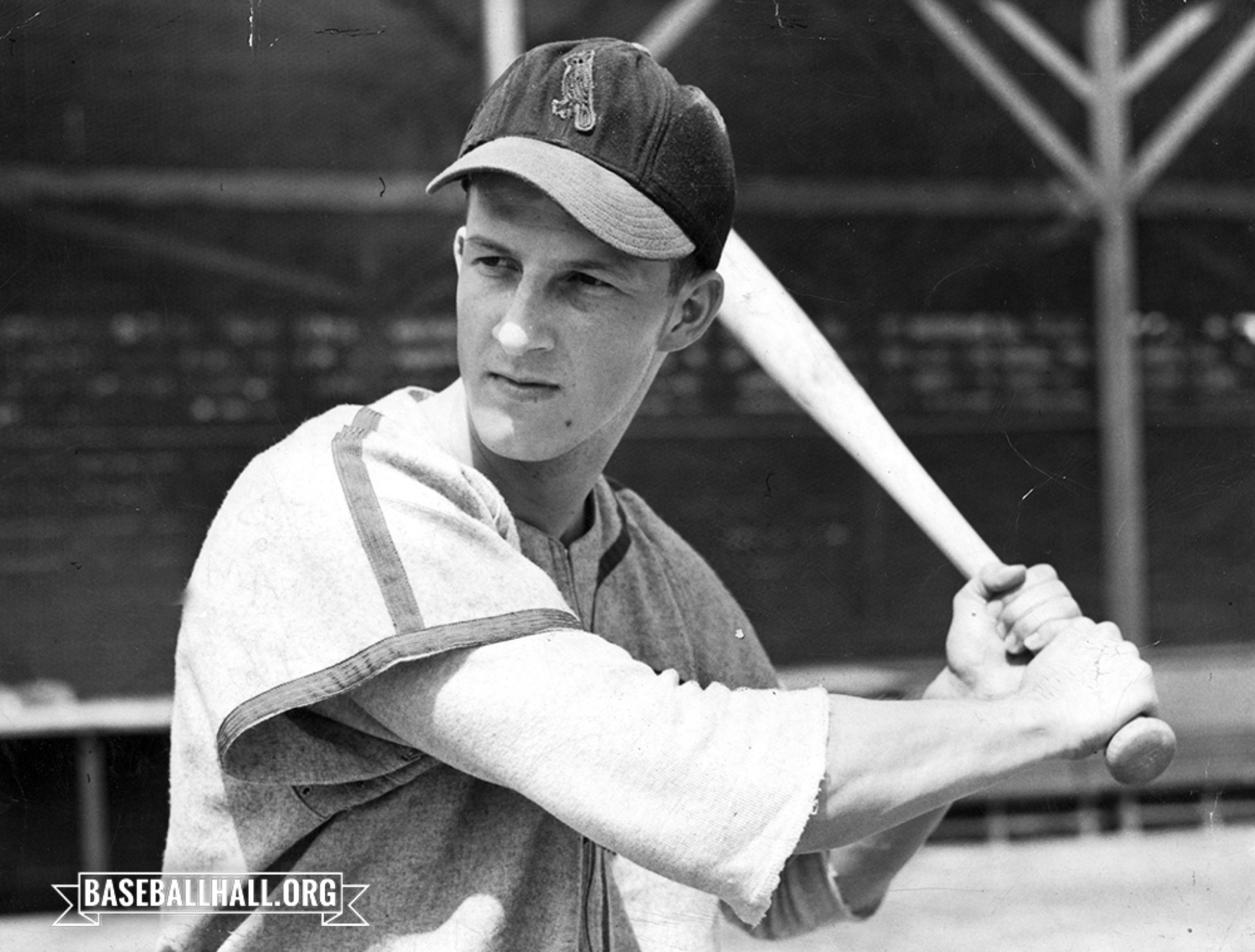Stan Coveleski
Position: Pitcher
Bats: Right • Throws: Right
5-11, 166lb (180cm, 75kg)
Born: July 13, 1889 in Shamokin, PA
Died: March 20, 1984 in South Bend, IN
Buried: St. Joseph Catholic Cemetery, South Bend, IN
Debut: September 10, 1912 (3,801st in major league history)
vs. DET 1.0 IP, 0 H, 0 SO, 1 BB, 0 ER
Last Game: August 3, 1928
vs. SLB 1.2 IP, 4 H, 0 SO, 2 BB, 1 ER
Hall of Fame: Inducted as Player in 1969. (Voted by Veteran’s Committee)
View Stan Coveleski’s Page at the Baseball Hall of Fame (plaque, photos, videos).
Full Name: Stanley Anthony Coveleski
Nicknames: Covey
Pronunciation: \ko-va-LESS-kee\
View Player Info from the B-R Bullpen
View Player Bio from the SABR BioProject
Relatives: Brother of Harry Coveleski
Nine Players Who Debuted in 1912
Rabbit Maranville
Cy Williams
Del Pratt
Bobby Veach
Ray Schalk
Casey Stengel
Buck Weaver
Ray Chapman
Herb Pennock
The Stan Coveleski Teammate Team
C: Steve O’Neill
1B: Lou Gehrig
2B: Eddie Collins
3B: Frank Baker
SS: Ray Chapman
LF: Goose Goslin
CF: Tris Speaker
RF: Babe Ruth
SP: Walter Johnson
SP: General Crowder
SP: Jim Bagby
SP: Waite Hoyt
RP: Firpo Marberry
M: Bucky Harris
Notable Events and Chronology for his Career
Biography
Using a fluttering spitball that dove sharply and broke inside on lefties and righties, Stan Coveleski helped two unlikely teams to the World Series. He won three games in the 1920 Series — the first championship for Cleveland, and in 1925 he helped the Senators to the World Series in his first year with that club, winning 20 games. He consistently topped 275 innings pitched and was a valuable pitcher well into his mid-thirties. Coveleski learned the spitter while in the minors in 1913-1915, earning a permanent spot in the big leagues in 1916 when the Indians bought his contract. A longtime resident of South Bend, Indiana, the ballfield in that college town bears his name.He was inducted into the Baseball Hall of Fame in 1969.
Biography
He was born Stanislaus Kowalewski in Shamokin, Pennsylvania, which was mining country. He and four brothers all became professional baseball players. The last name was changed to “Coveleskie” for all formal matters, but somewhere along the line sources dropped the last “e” and made it “Coveleski.” Stan’s Hall of Fame plaque, and the stadium in South Bend, Indiana that bears his name, both spell the last name “Coveleski,” but during their playing days, Harry (the only other brother to make the big leagues) and Stan were known as “Coveleskie.”
Stan’s brother Harry also pitched in the big leagues. The two of them made baseball history when they both won 20 games in a season, the first siblings to do so in MLB history. Harry first won 20 for the 1914 Detroit Tigers, Stan first won 20 for the Cleveland Indians in 1918. The two right-handed hurlers toiled in the American League together from 1916-1918, but never faced each other on the field. They made an agreement that they would never pitch against each other. Harry “The Giant Killer” was a fine pitcher, winning 22 games in 1914, 22 again in 1915, and 21 in 1916, all for Detroit. In 1917, he suffered an arm injury and was never the same, retiring from the majors in 1918 with 81 career wins.
According to research by SABR member Steve Steinberg, five Coveleski brothers played baseball, and at least four of them played professionally. Of course, the family name was actually Kowalewski, and one of the brothers might have played under that name. In addition to Stan and Harry, there was Jacob, the oldest, who played in Indians, though whether he played professionally at all is unknown. Stan claimed that Jacob was killed during the Spanish-American War, in 1898. The next oldest, Frank (or Fred), born in 1880, pitched in Shamokin in 1906 and later spent time in the International and Federal Leagues. Lastly, John (1884-1940), apparently had tryouts with big league clubs but never made the show.
Coveleskie always said it was the spitball that made him a major-league pitcher. He had a three-hit shutout in his debut with the A’s in 1912, but was returned to the minors for seasoning and learned the spitter while with Portland (PCL), shortly before being acquired by the Indians.
Despite the spitter’s eccentricity, Coveleskie (as the name was spelled during his playing days) was a control pitcher who averaged one walk every 3.86 innings over fourteen years. His spitball broke three ways – down, out, and down and out – and he said he always could control its movement by the placement of his fingers on the ball. It was his bread and butter pitch, although he sometimes went two or three innings without throwing it and had the usual fastball and curve to mix things up.
He was equally sparing with strikeouts (981 lifetime). Because of his control many batters swung at his first pitch. A number of times he got out of an inning with three pitches, and on one occasion he went seven innings when every pitch was a strike, a foul, or a hit. He claimed success in fanning Ruth and in reducing Cobb’s effectiveness by feeding him fastballs inside.
Overall, he had 39 shutouts, a streak of 13 wins in 1925 when he was 36 years old, and six consecutive seasons pitching more than 276 innings. His best years were with Cleveland, particularly the championship year of 1920 when he won three splendid five-hitters against Brooklyn in the Series. He allowed a total of two runs and two walks, struck out eight, and had an ERA of 0.67. After two under-.500 seasons, Cleveland traded him to Washington for two nonentities. His .800 (20-5) winning percentage and 2.84 ERA led the AL as the 1925 Senators repeated as AL champions. He lost two, however, in the Series against the Pirates.
Factoids, Quotes, Milestones and Odd Facts
Played For
Philadelphia Athletics (1912)
Cleveland Indians (1916-1924)
Washington Senators (1925-1927)
New York Yankees (1928)
Similar: Eddie Cicotte, Carl Mays, Freddie Fitzsimmons
Family Tree
Stan’s brother Harry also pitched in the big leagues. The two of them made baseball history when they both won 20 games in a season, the first siblings to do so in MLB history. Harry first won 20 for the 1914 Detroit Tigers, Stan first won 20 for the Cleveland Indians in 1918. The two right-handed hurlers toiled in the American League together from 1916-1918, but never faced each other on the field. They made an agreement that they would never pitch against each other. Harry was a fine pitcher, winning 22 games in 1914, 22 again in 1915, and 21 in 1916, all for Detroit. In 1917, he suffered an arm injury and was never the same, retiring from the majors in 1918 with 81 career wins.
According to research by SABR member Steve Steinberg, five Coveleski brothers played baseball, and at least four of them played professionally. Of course, the family name was actually Kowalewski, and one of the brothers might have played under that name. In addition to Stan and Harry, there was Jacob, the oldest, who played in Indians, though whether he played professionally at all is unknown. Stan claimed that Jacob was killed during the Spanish-American War, in 1898. The next oldest, Frank (or Fred), born in 1880, pitched in Shamokin in 1906 and later spent time in the International and Federal Leagues. Lastly, John (1884-1940), apparently had tryouts with big league clubs but never made the show.
Best Season, 1920
Coveleski finished second in ERA with a 2.49 mark. He would later win back-to-back ERA titles in 1923-24. In 1920 he was first in strikeouts, and finished in the top five in WHIP, hits per nine innings, and shutouts. In the World Series he pitched five-hitters for victories in Game One, Game Four, and the final Game Seven (it was a best-of-nine affair), allowing just two earned runs.
Post-Season Appearances
1920 World Series
1925 World Series
Where He Played: Coveleski was a starting pitcher, but like most good starting pitchers of his era, he was utilized in relief between starts. In 1919, when he won 24 games for the Indians, Coveleski was used out of the pen nine times and notched four saves.
Transactions
December 12, 1924: Traded by the Cleveland Indians to the Washington Senators for By Speece and Carr Smith.
What’s in a Name?
He was born Stanislaus Kowalewski in Shamokin, Pennsylvania, which was mining country. He and four brothers all became professional baseball players. The last name was changed to “Coveleskie” for all formal matters, but somewhere along the line sources dropped the last “e” and made it “Coveleski.” Stan’s Hall of Fame plaque, and the stadium in South Bend, Indiana that bears his name, both spell the last name “Coveleski,” but during their playing days, Harry (the only other brother to make the big leagues) and Stan were known as “Coveleskie.”
World Series Aces
Pitchers who have hurled three complete-game wins in one World Series:
Christy Mathewson, Giants (1905 vs. A’s)
27 IP, 14 H, 18 K, 1 BB, 0.00 ERA
Babe Adams, Pirates (1909 vs. Tigers)
27 IP, 18 H, 11 K, 6 BB, 1.33 ERA
Stan Coveleski, Indians (1920 vs. Robins)
27 IP, 15 H, 8 K, 2 BB, 0.67 ERA
Lew Burdette, Braves (1957 vs. Braves)
27 IP, 21 H, 13 K, 4 BB, 0.67 ERA
Bob Gibson, Cardinals (1967 vs. Red Sox)
27 IP, 14 H, 26 K, 5 BB, 1.00 ERA
Mickey Lolich, Tigers (1968 vs. Cardinals) 27 IP, 20 H, 21 K, 6 BB, 1.67 ERA
Replaced
Coveleski and Jim Bagby Sr. earned spots in the Indians’ 1916 rotation, replacing Rip Hagerman and Willie Mitchell, both of whom were traded.
Replaced By
Bump Hadley, in the 1927 Senators’ rotation.
Best Strength as a Player
Control of his spitball. Coveleski stayed around the plate, enticing batters to swing at his first pitch rather than fall behind in the count.
Largest Weakness as a Player
Velocity
Other Resources & Links

